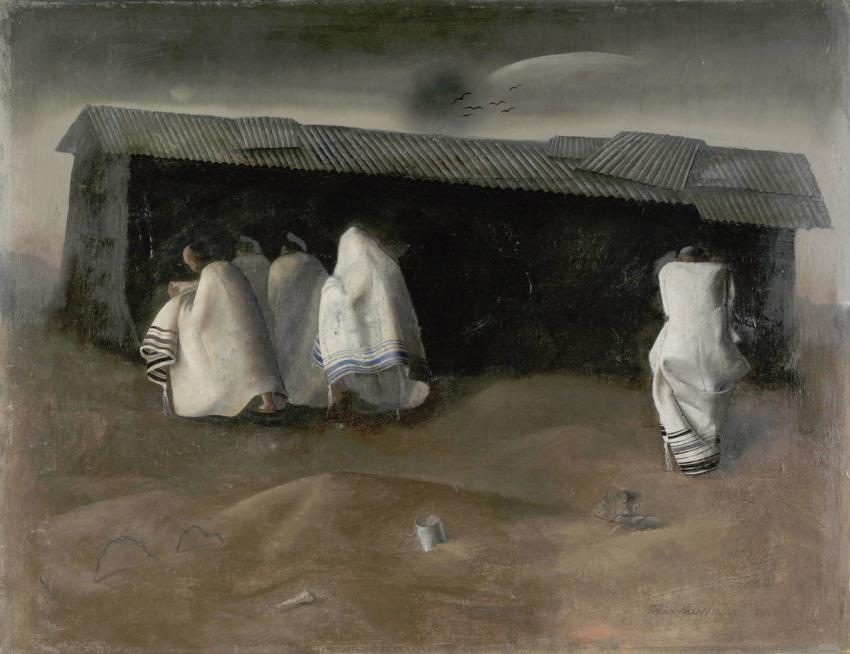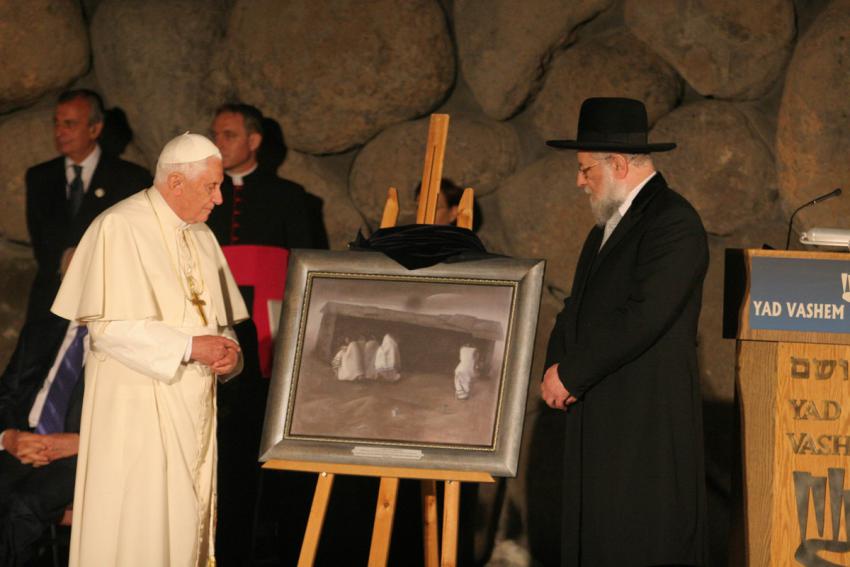The origins of this work of art are found in an outline quickly sketched by Felix Nussbaum immediately after escaping to Brussels from the French internment camp in Gurs. Here, for the first time, his Jewish identity takes central stage, after many years of addressing universal subjects. Marked as a Jew and denied his freedom, Nussbaum fully comprehended his Jewish affiliation. A universalist at heart who believed in the power of art, he was compelled to express his Judaism through this medium.
The scene: a cohesive group of four men wrapped in their prayer shawls, standing in front of a camp barrack that served as a makeshift synagogue, while a single figure remains apart. This is likely the artist himself, who still hesitates whether to join the service. Does he too put his trust in the God of Israel, in the shadow of Whose mercy and salvation Jews can find comfort? The harsh whiteness of the prayer shawls is the only highly illuminated surface in the prevailing gloom. Only under the tallitot does light prevail; yet the enveloping and protective shawl does nothing but reveal that in the shadow of death, the fragile Jew is forced to resort to praying in a place where Jewish prayer has no home.
The gray light of the threatening morning sky, the sun blotted out by a dark cloud, confers on the painting an apocalyptic aura. Above the rickety hut, scavenger birds circle above their prey, indicating Nussbaum's full understanding of the impending threat. Similarly, the items scattered on the sand allude to the struggle for human survival: barbed wire, leaving no doubt that the synagogue is in the confines of a concentration camp; a bone and an empty tin can, symbolizing hunger; and an abandoned shoe, all that is left of those who once lived.
Felix Nussbaum was born in Osnabrück, Germany in 1904, and studied art in Hamburg and at the Berlin Academy of Art. Following the Nazis' rise to power, Nussbaum refused to return to his homeland, condemning himself to life as a refugee. He sought asylum in Belgium with his wife, the artist Felka Platek, and went underground after escaping from Gurs. Though forced to live in hiding, Nussbaum painted many works expressing his fate as a Jew, as well as the fate of his persecuted brethren.
In 1944, an informant revealed Nussbaum’s hiding place, and he and his wife were deported that July on the last transport from Belgium to Auschwitz, where they were murdered: the apocalyptic vision in the painting revealing itself as reality. The paintings he left behind testify to the Jewish artist’s attempt to cope with the fate decreed by the Nazis. So long as his hand still grasped a brush, Nussbaum created for future generations a document of breathtaking power, confronting the persecution and questions of existential moment faced by many of his fellow Jews in those dark days of the Holocaust.
First published in Yad Vashem Jerusalem magazine, #54, July 2009




